It’s been a busy July for Russian President Vladimir Putin. Last Friday, Putin gave an interview to a Russian newspaper admitting that he had a meeting at the Kremlin early in July with Prigozhin and 35 of his top Wagner Group commanders and, in the words of The Guardian, “sought to negotiate terms for the mercenary group’s continued participation in Russia’s war in Ukraine.” So, the president of Russia is sitting down somewhere in the Kremlin and attempting to negotiate terms with Yevgeny Prigozhin, who led an uprising against him, and the senior Wagner officers who took part in the uprising, to go back to work for him as part of the Russian military, under the authority and command of the Russian defense chief Prigozhin accused of killing his men. Sounds like a power move and a half, doesn’t it?
Apparently, the offer didn’t meet with much success. According to the Guardian, Putin told the Russian newspaper, “A lot of them nodded their heads when I said this. But Prigozhin, who was sitting in front of them and didn’t see [their reaction], said: ‘No, the guys won’t agree with that decision.’”
In an apparent attempt to set the stage for the negotiations with Prigozhin, two days before, the Kremlin released a series of embarrassing photos of the Wagner leader in Borat-like disguises wearing obvious fake beards and in one, a Justin Bieber-style wig.
The Kremlin also released photos of Prigozhin’s St. Petersburg mansion, meant, The Russia-watchers speculated, to show the luxurious lifestyle of Prigozhin at a time when his fighters were dying by the hundreds and perhaps thousands in Ukraine.
Another empty power-move: There are videos on YouTube posted by jailed Putin antagonist Alexi Navalny showing Putin’s 191,000 square foot mansion in Crimea, built with Russian tax dollars at a cost of some $2 billion.
Meanwhile, photos of Prigozhin delivering a withering tirade against Russian Defense Minister Sergey Shoigu while standing next to a row of dead Wagner soldiers in coffins outside of Bakhmut are all over Prigozhin’s heavily-followed Telegram channel.
This photo, showing Prigozhin being greeted like a rock star after his forces took over the Russian military headquarters in Rostov-on-Don, is the one Putin is trying to bury with his PR offensive.
During the interview Putin gave two days after failing to win the loyalty of Prigozhin’s Wagner Group, he rattled his now dinner knife-sized saber by claiming that Prigozhin’s mercenary army “doesn’t exist,” pointing to Russian laws that ban private armies.
You know, the private army that Putin gave the mission of taking the completely meaningless prize of Bakhmut, during which the Wagner Group forces took thousands of casualties. Recent maps of the front lines in Ukraine show Bakhmut beginning to be surrounded by Ukrainian forces on the north and south, with the Russian military trapped within the Bakhmut city limits.
Meanwhile, not even a month has passed since Prigozhin led a convoy of his Wagner forces, complete with tanks, armored personnel carriers, artillery pieces, and antiaircraft batteries, to within 125 miles of Moscow before reportedly calling off his “march for justice,” (Prigozhin’s words) and making a deal with Putin for himself and his fighters to be banished to Belarus.
What’s happened since? Ukraine reported today that “only a few hundred” Wagner forces are in Belarus. With Prigozhin and 35 of his senior commanders meeting with Putin in Moscow on Friday, they certainly aren’t in Belarus.
A friend asked me this afternoon, “why did he stop?” referring to Prigozhin and his late June march on Moscow. No one knows for certain, of course, but it is looking more and more that Prigozhin did it to make a statement. Recall his claim that Russian regular forces had delivered some sort of strike on a Wagner encampment in Ukraine, killing several dozen Wagner fighters. That was supposedly the trigger for Prigozhin’s march.
But the Wagner Group’s post-battle-of-Bakhmut, where they were supposedly replenishing their supplies and resting after almost a year of steady combat, was way north in Ukraine of Rostov-on-Don, at the far southwest corner of Russia, not far from the Sea of Azoz and the border with Ukraine. So why did Prigozhin start there, by taking the main headquarters of the Russian war effort in Ukraine? Recall that his Wagner fighters moved from where they had been regrouping in Ukraine across the border with Russia and into Rostov unopposed. Prigozhin and the Wagner Group fighters quickly took over the Russian headquarters and were greeted in the streets like saviors.
Prigozhin’s heavily armed convoy didn’t begin its march on Moscow only from Rostov in Russian south. Some of his fighters had to have moved across the Russian border further north and begun the convoy towards Moscow, because it would not have been possible to move so much heavy military equipment over 300 miles in less than 24 hours, even on a highway, and even unopposed.
Something else was going on, and I think it was Prigozhin making the statement that he and his fighters could do whatever they wanted, even inside Russia, without any opposition from Moscow-led regular Russian military forces. Once he accomplished that, he called off his “march for justice” and waited to see what Putin would do.
Prigozhin started out with nothing. His mother was a nurse in a Leningrad hospital. His father, a mining engineer, died when he was nine. Prigozhin joined street gangs and became a small-time criminal, sentenced at one time to two years in prison, suspended, which he worked off in a chemical plant. In 1981, he was sentenced to 12 years in a penal colony for theft and for choking a woman on a street and stealing her jewelry. He was released in 1990 with time off for good behavior and soon joined the rush to privatization in Russia. He got involved in the grocery store business and moved from there into gambling casinos and restaurants. Along the way, Prigozhin learned how to make moves in the new capitalist Russia and became acquainted with Putin. By the early 2000’s, he had started a catering business and received government contracts. By 2012, he was supplying food to the Russian military with a contract worth at least $1.2 billion a year and got the moniker, “Putin’s chef.”
Prigozhin, like many other Russian oligarchs, made his money through connections with Putin. He not only learned the ropes but saw opportunities. One became the Wagner Group, Prigozhin’s private army which Putin used as his private army, exploiting natural resources in Africa by providing “security” to corrupt African leaders. Putin came out of the KGB. Prigozhin came out of criminal gangs and Russian prisons. It was a brotherhood of convenience between thugs.
At this point, who needs who? Having called Prigozhin a traitor while the insurrection was underway, Putin quickly began what has turned into a weeks-long negotiation to get Prigozhin’s Wagner soldiers back into the fight in Ukraine. That should give you some idea of who needs who.
But the bigger story is that Putin has a lot of problems right now. Sanctions have hurt the Russian economy. He’s an international pariah who can’t travel, isn’t invited to any summits, G-22 or otherwise, and most of all, his hoped for five-day takeover of Ukraine has turned into a military and political disaster of the first order. Prigozhin isn’t Putin’s biggest problem. Ukraine is, and Prigozhin is using that fact to his advantage.
Everything about Russia is complicated, and the situation between Putin and Prigozhin is no different. Putin has massaged his image for decades to appear like a macho man and a fighter. Prigozhin, with years of criminality and ten years of prison under the belt around his substantial girth, actually is what Putin’s PR offensives have tried to make Putin out to be. From opposite ends of the same grubby table, these guys really do appear to understand each other, which is interesting all by itself.
Nobody knows where Putin sleeps at night these days. He is said to have had rooms constructed in every place he owns or visits so he can make pronouncements with the same view of wood paneling and elaborate curtains and flags in the background, keeping everyone guessing about his real whereabouts. It has long been one of the greatest powers anyone can have in Russia, to keep everyone guessing.
The question right now isn’t Putin’s next move, it’s what is Prigozhin’s next move. We don’t know any more about Prigozhin’s plans than we do about where Putin sleeps at night. But for right now, what it looks like from afar is two thugs keeping everyone, including each other, guessing. As Borat would say, “What a country!”



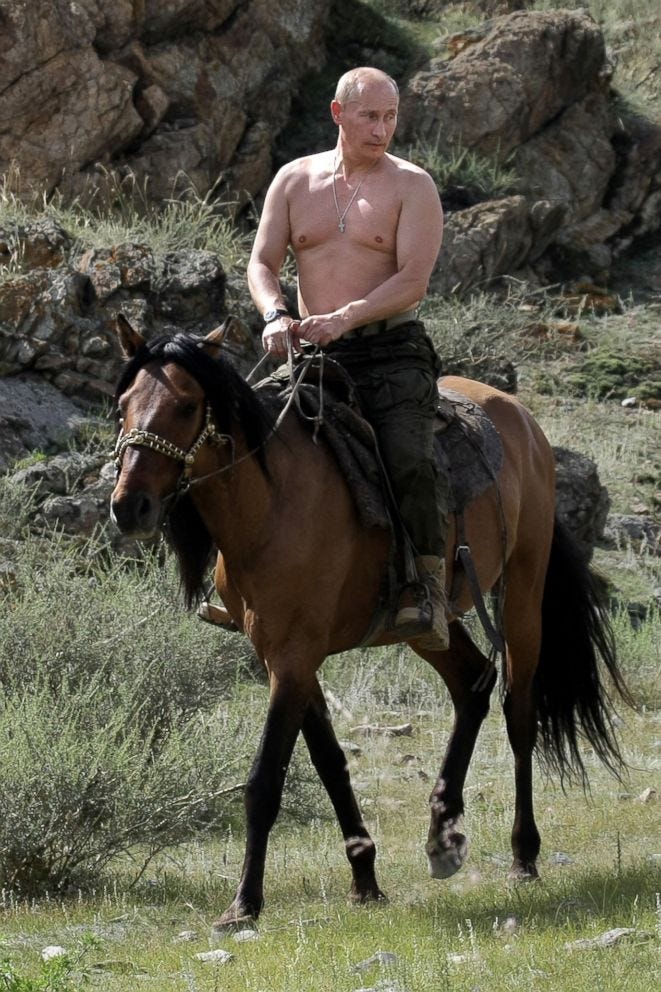
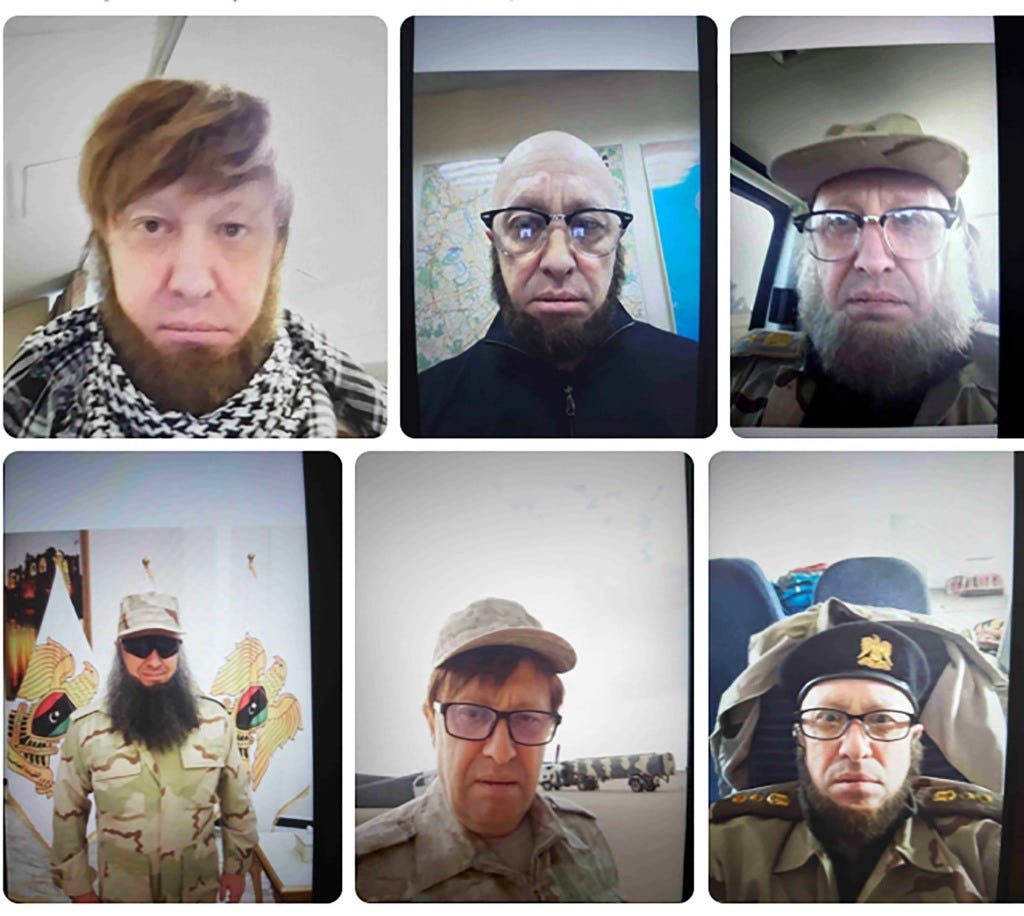
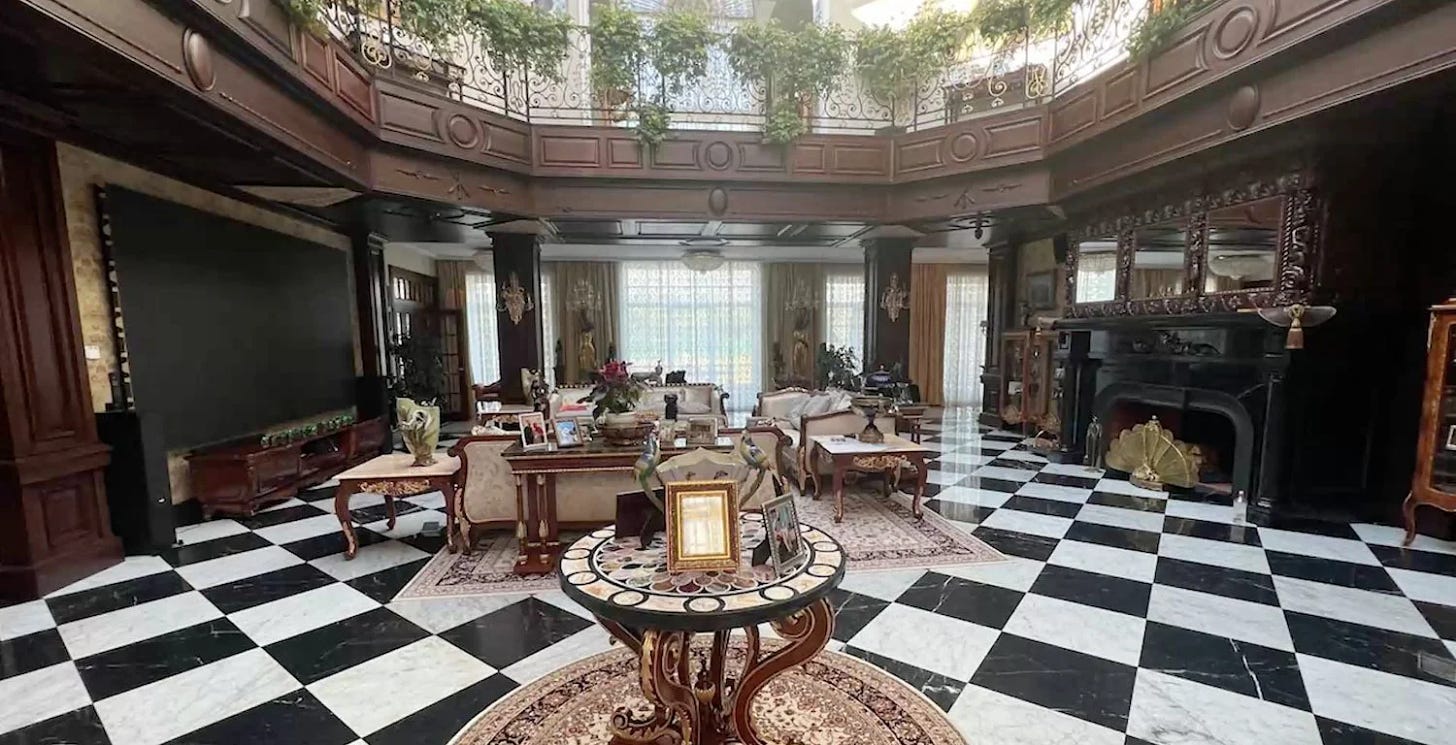
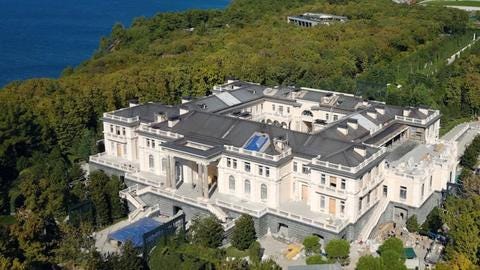
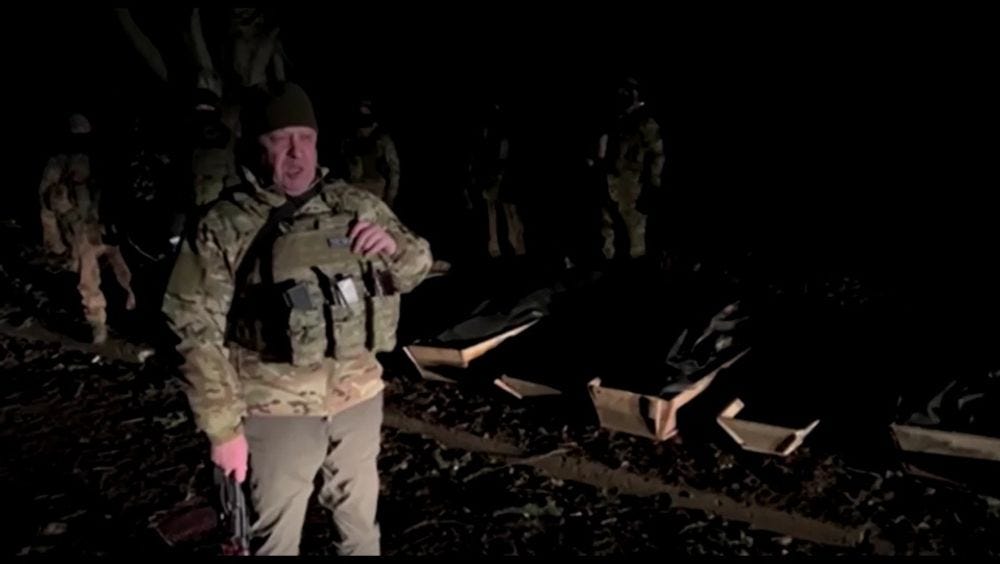
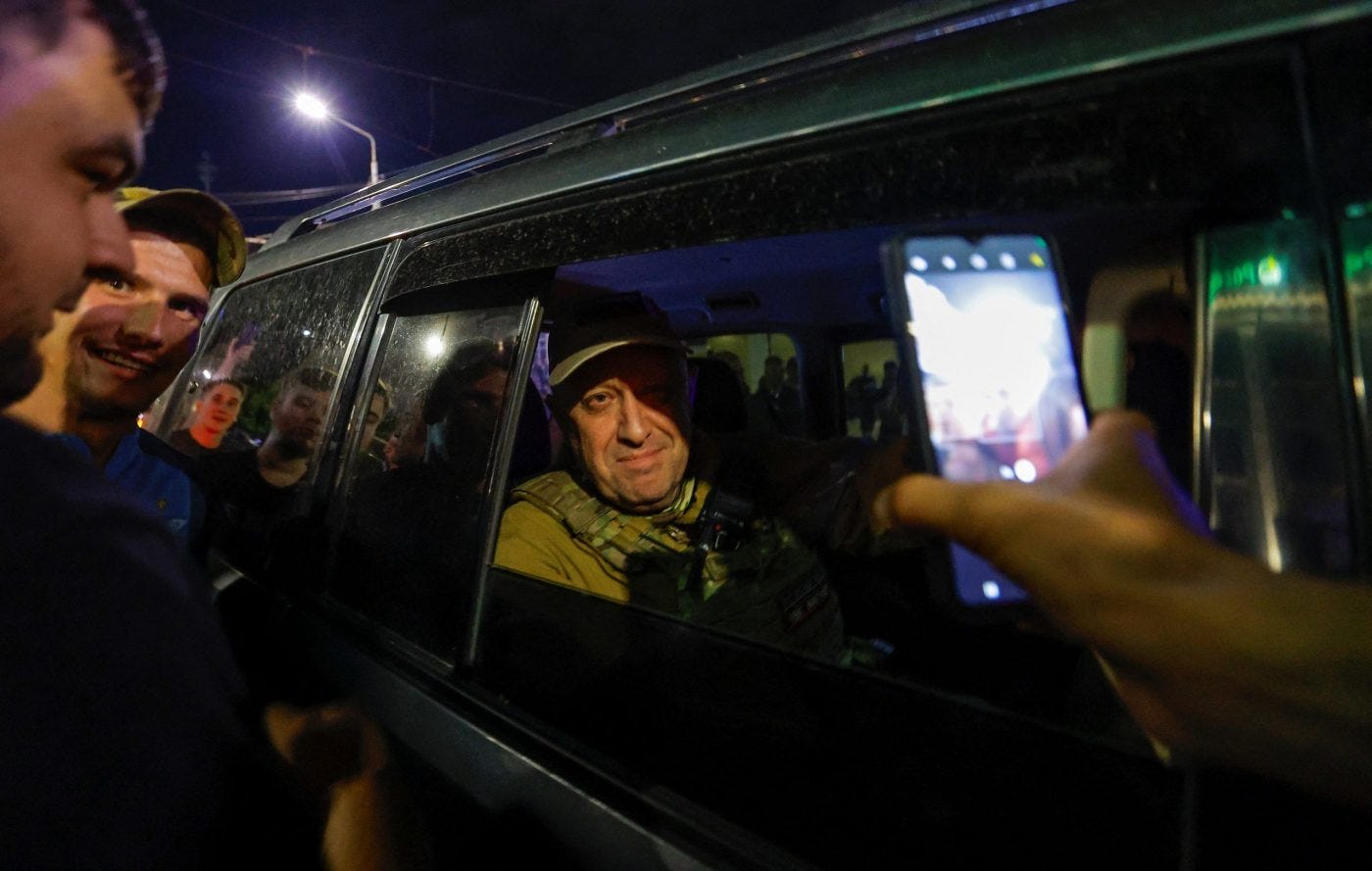
PS to the photos. Putin is not a large man, but is he riding a Shetland pony? The scale is off there.
I admit I loved all the pictures. As for “Putin’s 191,000 square foot mansion in Crimea at a cost of some $2 billion”, that is not a mansion, it is a very large resort hotel. And perhaps a prison, too ... along with a mall. And maybe a hospital. Another nice touch was the reproduction of the same room in God knows how many places so his whereabouts could not be pinpointed. Them Ruski leaders could certainly teach the mob a thing or two.